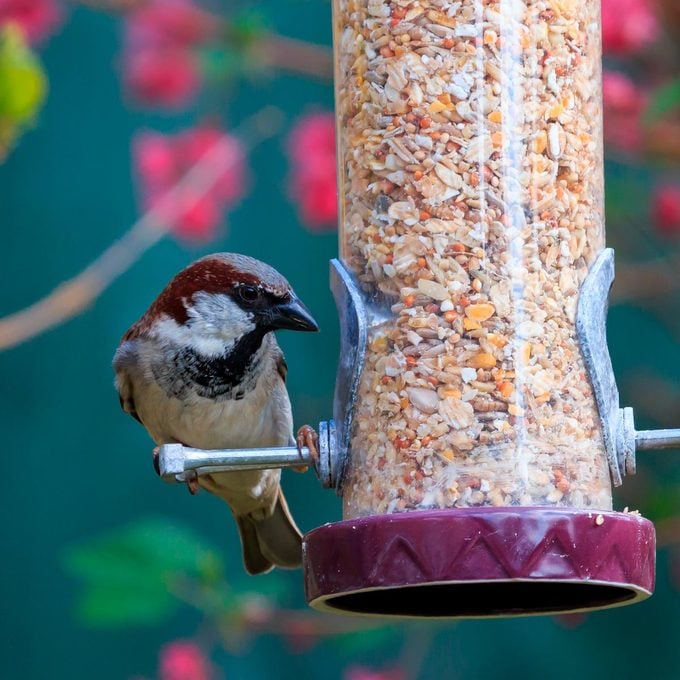Find out why some people stop feeding the birds when warm weather arrives.
Should You Take Down Your Bird Feeder in the Summer?

Backyard feeders offer a food source for neighborhood birds when wild pickings are scarce, especially in winter. Birds could get by in any season without your offerings, no doubt, but it’s clear they enjoy the sun flower seed buffets. During the summer months, however, when bugs and plants are prevalent, many wonder: Should I be feeding the birds? The short answer is that it’s perfectly fine to feed birds year-round, with proper care.
Warm temperatures lead to an increase in infectious diseases. When wildlife (say birds eating at feeders) come together in close proximity, the spread of disease is more likely. Summer heat can cause seed and suet to spoil or become moldy much quicker, especially if your feeders are in the sun.
Research shows that feeding in summer may have an upside. A study in the journal Conservation Physiology found that despite the fact that feeder birds had more diseases on average, those same birds were also in better physical condition than other wild birds. Travis Wilcoxen and his co-authors write, “Generally, the individual health of birds improved with supplemental feeding.”
Like so many things in life, to feed or not to feed has no clear-cut answer. Birds & Blooms field editor Juli Seyfried of Cincinnati, Ohio, sets out suet and mixed seeds in winter, but says, “Come spring, we stop feeding because insects are available.”
But many bird-watchers do set out seed feeders in summer because of certain seasonal perks. “Birds bring their edglings to the yard when they know there’s a reliable food source,” says Jen St. Louis of Elmira, Ontario.
Next, read what you should do if you find a bird nest in your yard.
If you are eager to feed during the summer—because seeing the colorful, seasonal birds up close is a real joy—then it’s important that you keep your feeders and surrounding areas clean to avoid spreading illness. Spray and wipe feeders with a 10% bleach solution, rinse well and dry every few fillings. Once or twice per season, take them down and give them a full wash with hot water and soap, or run them through the dishwasher. Also be sure to sweep up the husks and dropped seeds.
If you don’t want to keep feeders up or can’t keep them clean during the summer months, the birds will still be fine without you. When the cool weather of fall comes in, refill the feeders in time to watch the autumn migrants and winter resident species return! Next, build this gazebo-style bird feeder for your backyard.
Summer Menu for Bird Feeders
Add variety to your offerings as the seasons change. Summer favorites include oranges for orioles, mealworms for bluebirds and sugar water for hummingbirds.
“We feed the birds year-round, however, we have to pay close attention that other critters aren’t getting at the food, especially deer!” — Patrick Hogan, Temperance, Michigan
Hot-Weather Habits for Filling Feeders
Fill your feeders halfway in summer, so the food is less likely to go bad and won’t go to waste. Once the seed or suet has spoiled, toss it.
Plus: 2-Hour Project: How to Build a Cantina Bird Feeder.


















